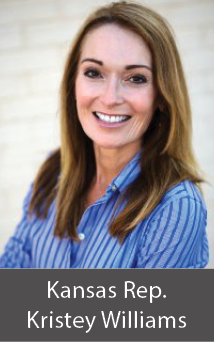Several states have decided to expand school-choice programs in 2021, including three in the Midwest
By the start of June, 13 U.S. states had enacted various types of laws on educational choice in 2021, creating a total of five new programs and expanding 13 existing ones.
“That is atypical; it’s a number much larger than what we’re used to seeing,” says Mike McShane, who tracks this state-level activity as director of national research for EdChoice, the nonprofit organization that advocates for such laws. Three of those states were in the Midwest:
- Iowa’s expansion of a tax credit program for individuals who donate to organizations that raise money for students to attend private schools,
- Kansas’ increase in student eligibility for a
 n existing scholarship program, and
n existing scholarship program, and - Indiana’s new budget that includes a mix of new initiatives and enlargement of an existing voucher program.
Why did this surge in legislative activity occur? McShane believes it’s at least partially due to the effects of the COVID-19 pandemic, which has included conflicts over school policies in areas such as in-person vs. remote vs. hybrid learning and masks vs. no masks, as well as the experience of discovering new ways of getting education delivered. (For example, a surprising number of parents say they liked the hybrid model, McShane says, and there was a spike in homeschooling and “micro-schooling.”)
And he sees interest in school-choice policies only growing as families, schools and states adjust to the post-pandemic world of K-12 education.
“Some kids are going to need remediation, some are going to need acceleration,” McShane says. “Some are going to need to refocus on the social aspects of school, some on the academic aspects. So there’s not going to be one solution because the experiences were so different. We’re going to see so many families wanting different things.”
This year in Kansas, one version of a bill to create new education savings accounts for families to attend private schools would have included eligibility for any student who lacked an in-person learning option at his or her local public school. No ESAs were established in Kansas this year.
However, as part of a broader agreement between the Republican-led Legislature and Democrat Gov. Laura Kelly (HB 2134), the state altered its Tax Credit for Low Income Students Scholarship Program, which dates back to 2014.
Previously, the program was only open to low-income students attending one of the state’s 100 lowest-performing schools. Now, all low-income students will be eligible, a change that Kansas Rep. Kristey Williams says will greatly expand eligibility and participation.
During the 2020-’21 school year, 632 Kansas students were awarded scholarships totaling close to $2 million. They attended one of 39 qualified private schools. The total amount of tax credits was $2.47 million; the leading scholarship-granting organization is the Catholic Education Foundation.
“There are many different reasons a parent would opt for this so their child can succeed,” Williams says. “Some kids need a little Jesus. Some need away from friends or the neighborhood, or don’t want to be distracted by peers. Some need more structure or just a different environment.”
This year’s expansion in Kansas came as part of an agreement to fully fund public schools.
In Indiana, already a state with one of the most expansive school-choice laws in the country, lawmakers significantly increased eligibility for the existing Choice Scholarship Program as part of its new two-year budget (HB 1001). As a result, students living in households with incomes of up to 300 percent of eligibility can qualify; the cap had been 150 percent. Additionally, the amount of scholarship money to attend a private school will be equal to 90 percent of the per-pupil funding level that is provided to the student’s public school. (Previously, the amount varied depending on the family’s income level; it was usually less than 90 percent.)
Lastly, the Indiana General Assembly established new education savings accounts for the families of students with disabilities. Money from the accounts can be used to pay for specific therapies or classes or to attend private schools; it will come from a portion of the state dollars that go to the student’s local public school.
“Indiana has been much more of a story of slow growth [on school choice],” McShane says about its long legislative history of incremental increases in programs and eligibility. “It had a small number of kids participate at first, and then more and more and more. They’ve had the opportunity to measure it and see how it’s going, and make sure people are benefiting.”